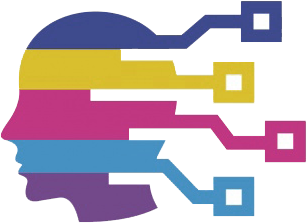Learning a new language has always been a challenging yet rewarding endeavor, and as globalization connects cultures closer than ever, the demand for effective language acquisition tools continues to rise. Google, known for its continuous innovation, has recently launched three groundbreaking AI experiments aimed at enhancing the language learning journey, potentially disrupting established platforms like Duolingo. But what does this mean for users seeking personalized and context-driven learning experiences?
A Tailored Approach to Language Learning
At the heart of Google’s new initiatives lies a commitment to personalization. One of the most notable experiments, dubbed “Tiny Lesson,” directly addresses one of the most common frustrations for language learners: the inability to recall essential phrases in moments of need. Imagine finding yourself in a precarious situation, like misplacing your passport in an unfamiliar city, and being unable to communicate effectively. The “Tiny Lesson” feature empowers users to articulate specific scenarios, such as seeking assistance for a lost item, and provides them with real-time vocabulary and contextual grammar tips.
This feature stands out, not just for its immediate utility, but also for its relevance to everyday life. It recognizes that language learning is not just about memorizing vocabulary; it’s about applying that knowledge pragmatically. By focusing on real-life situations, Google is transcending the traditional frameworks of language education.
Speaking the Local Lingo
Moving on to the “Slang Hang” experiment, Google is making bold strides in making conversational language learning a reality. Formal language often lacks the richness and nuance of everyday interactions, and this tool aims to bridge that gap. It provides users with a simulated dialogue, reflecting authentic exchanges like a casual chat between friends or a vendor-customer interaction. By utilizing this feature, learners can gradually shed the rigid formality of textbook language and gain fluency in a more natural, colloquial style.
Yet, it’s crucial to highlight that the journey towards conversational skills isn’t without pitfalls. Google acknowledges that the experiment may misinterpret or even fabricate certain slang terms. This caveat serves as a reminder of the importance of cross-referencing and consulting reliable linguistic resources, ensuring that users don’t inadvertently adopt incorrect language practices.
Visual Learning Through “Word Cam”
The third innovative experiment, “Word Cam,” seeks to harness the power of visual learning. With a simple snapshot of one’s environment, Google’s Gemini model identifies objects and provides their corresponding labels in the target language. This visual context can enhance memory retention and vocabulary acquisition significantly. For instance, understanding the word for “window” becomes much more robust when you are also introduced to related terms like “blinds” through immediate visual stimuli.
This experiment underscores a broader pedagogical shift towards experiential learning, where users actively engage with their surroundings rather than passively consuming information. It’s a strategy that not only teaches vocabulary but also contextualizes language in a way that feels organic and intuitive.
The Future of Language Learning Technology
Google’s commitment to integrating AI technology into personalized language education is a promising advancement that could reshape the landscape of language learning. With support for numerous languages, ranging from Arabic to Spanish, the potential reach is impressively broad. However, it’s essential for users to remain engaged and discerning throughout their learning journey, as technology alone cannot replace the cognitive effort required in mastering a new language.
As these experiments evolve and user feedback helps fine-tune their functionality, we may witness a transformative shift in how learners engage with language. No longer tethered to formal education or static language apps, individuals will enjoy a more dynamic and tailored learning experience. The road ahead is filled with possibilities, and as Google takes bold steps into this arena, learners everywhere are reminded of the sheer excitement that accompanies the pursuit of new languages. With tools designed to empower, the horizon looks promising for those committed to speaking the world’s diverse tongues.

